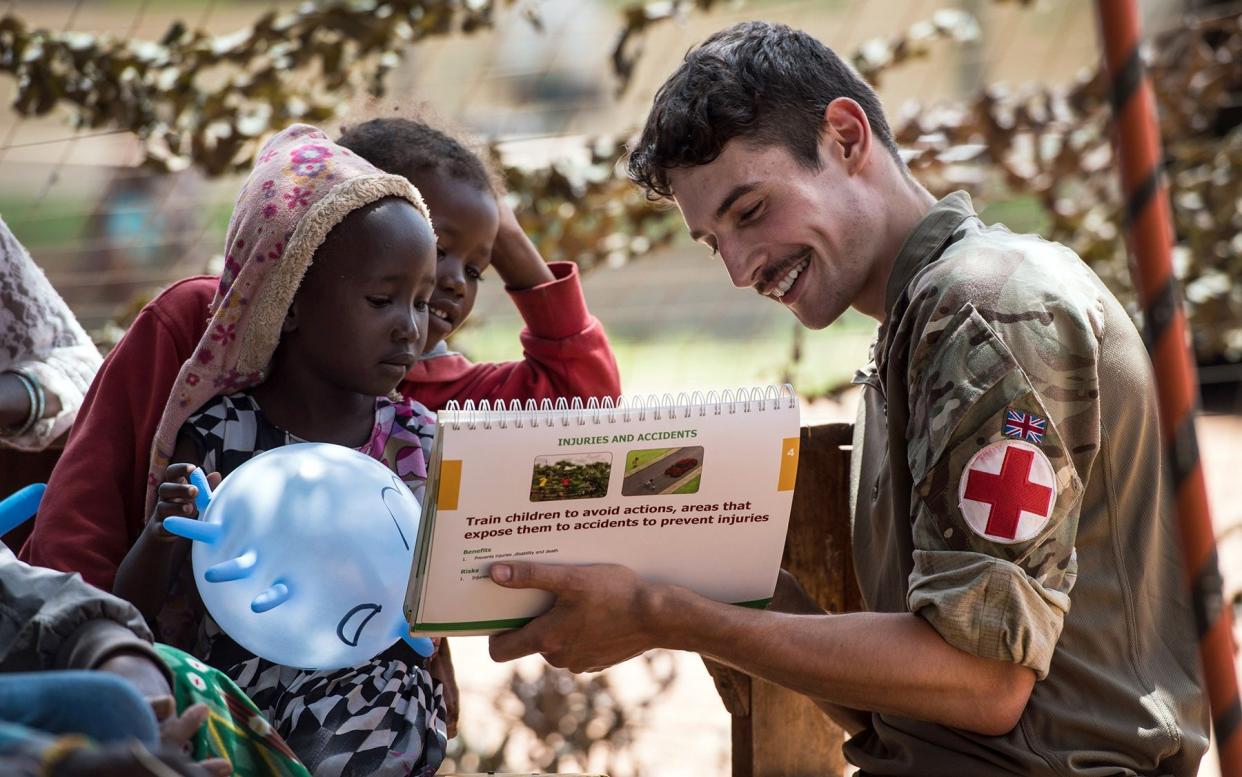Plan to merge Army medical corps into single regiment

Defence chiefs face a backlash over proposals to merge the Army’s four separate medical units into a single regiment, The Telegraph can reveal.
The Royal Army Medical Corps, the Royal Army Dental Corps, the Royal Army Veterinary Corps and the Queen Alexandra’s Royal Army Nursing Corps, known as the Army Medical Services, could soon become a single unit.
Opponents have warned the plans risk creating a “characterless homogenous unit”.
Details of the proposed merger, named Project Victoria, have been revealed in a letter sent to all serving and former members of the regiment on Wednesday.
A spokesman for the Army confirmed that “amalgamating parts of Army Medical Services” is being considered, but insisted that “no final decision has yet been made”.
Serving personnel have already said such a move would “backfire”, condemning the plans as a cost-cutting exercise prompted by the struggle to recruit medics to the Armed Forces.
One senior officer said: “These are all very fine and famous regiments with a proud history. They are all distinct organisations with their own character and ethos.
“It seems extraordinary to me that the MoD seems to think that the way ahead is to create a characterless homogenous unit. If this is a plan to save money and boost recruiting then it will backfire very badly.”
Potential to cut costs
Merging four medical units into one umbrella organisation will mean that rather than four separate headquarters, the new unit will have one.
The move would offer the potential to cut costs but one source believes it could lead to “inefficiency”.
In a letter, seen by The Telegraph, Brigadier Anthony Finn, the head of Army Medical Services, said that although planning is at an advanced stage “no decisions have yet been taken”.
He wrote: “We would like to assure everyone with an interest in this process that the needs of our serving community and the views of our veteran communities have been taken into account at all stages through a variety of representatives.
“In a rapidly changing context for both defence and healthcare, making sure that we have the right structures and processes in place to care for our patients and support the Army, building on the heritage we share, has been paramount in all our discussions.
“It is vital that we make sure we remain an attractive, modern and welcoming employer for those who are willing and able to deliver healthcare in difficult and frequently dangerous places beyond the next decade,” he added.
“Nothing we have discussed has negated any of your service to date, nor has it looked to weaken or remove the link between those serving now, and those who will serve in the future, with those who served, caring for the Army’s patients, in the past.”
He concluded: “You will understand that these decisions do not all rest with us.”
Roots in the 17th Century
The Royal Army Medical Corps is one of the most historic regiments in the British Army and dates back to the 17th Century.
Members of the regiment have also won 29 Victoria Crosses (VC), two of which were with a bar, indicating that the recipient medics won the VC twice.
One of those who won a VC was Surgeon Major James Henry Reynolds who won the medal at the battle Rorke’s Drift in 1879, which was immortalised in the film Zulu.
A spokesman for the Army said: “We’re always looking to optimise the Army’s outputs and operational effectiveness. Consideration is being given to amalgamating parts of Army Medical Services, but no final decision has been made at this time.
“Army Medical Services remains a modern, operationally proven organisation dedicated to maintaining soldiers’ health and providing medical care to the sick and injured.”


